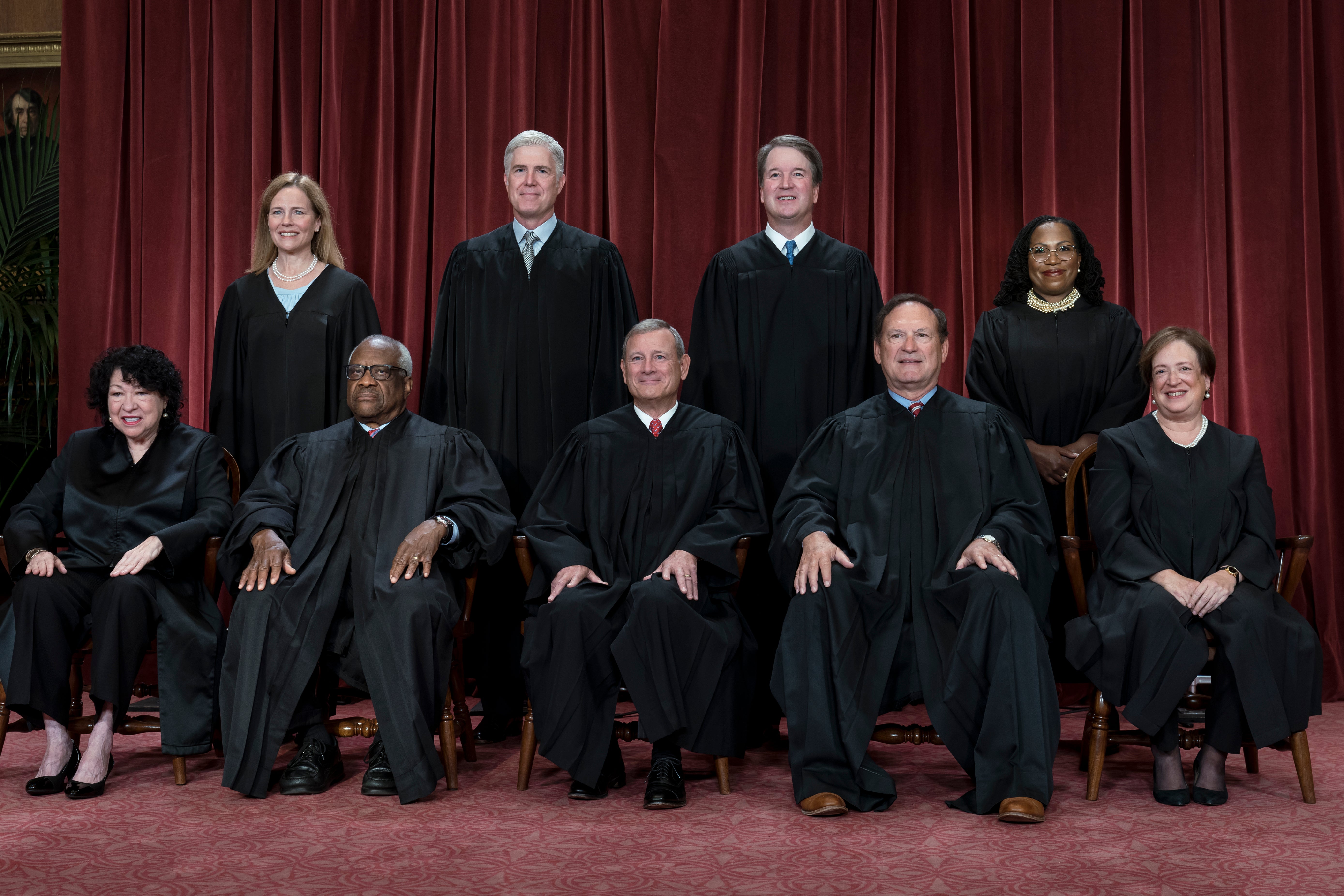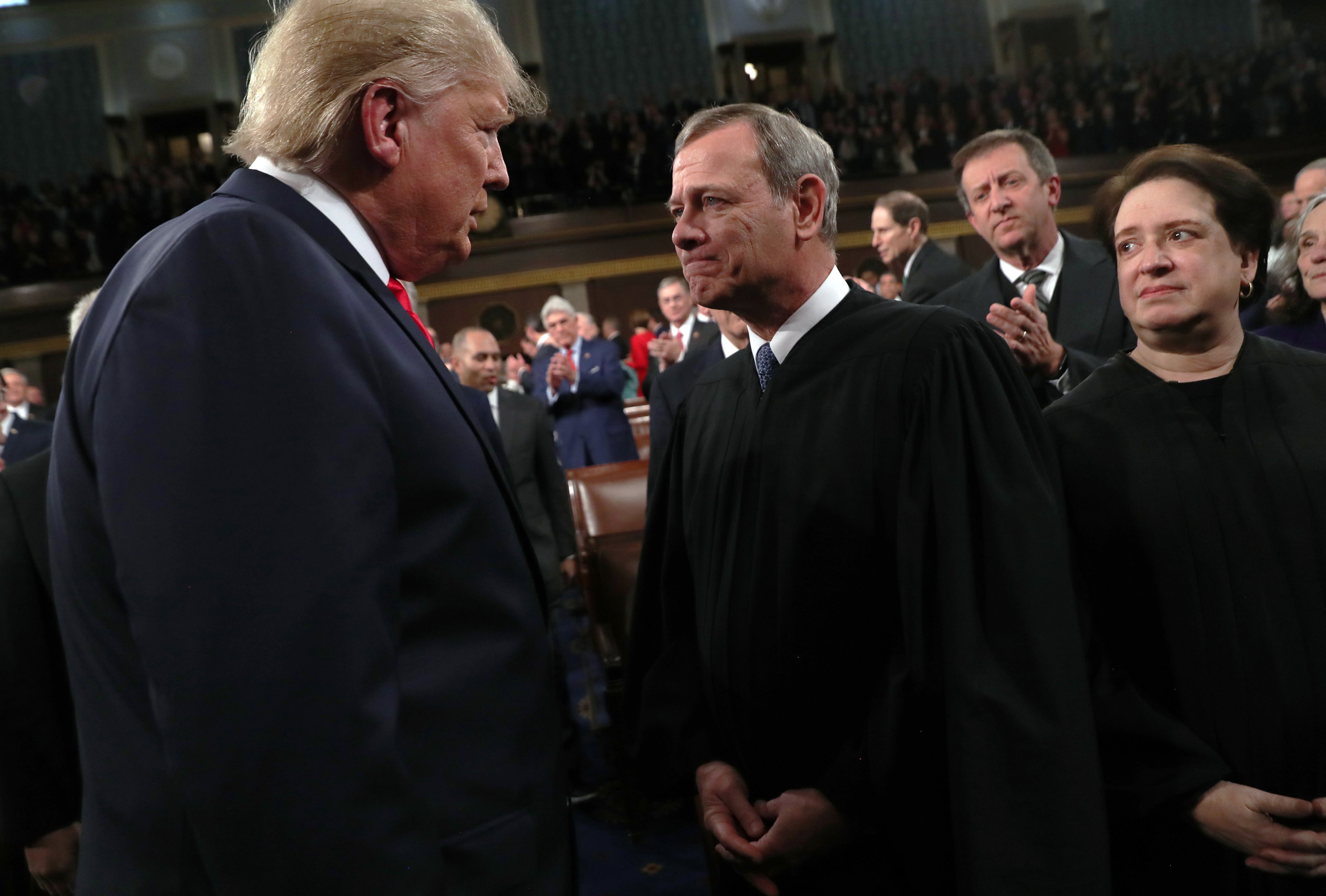Politics are playing a bigger role in Supreme Court decisions and John Roberts is pulling the lever
Chief Justice historically has tried to keep the Supreme Court out of politically charged discourse but that changed this term

Your support helps us to tell the story
From reproductive rights to climate change to Big Tech, The Independent is on the ground when the story is developing. Whether it's investigating the financials of Elon Musk's pro-Trump PAC or producing our latest documentary, 'The A Word', which shines a light on the American women fighting for reproductive rights, we know how important it is to parse out the facts from the messaging.
At such a critical moment in US history, we need reporters on the ground. Your donation allows us to keep sending journalists to speak to both sides of the story.
The Independent is trusted by Americans across the entire political spectrum. And unlike many other quality news outlets, we choose not to lock Americans out of our reporting and analysis with paywalls. We believe quality journalism should be available to everyone, paid for by those who can afford it.
Your support makes all the difference.Supreme Court Chief Justice John Roberts has often fostered the image of the Supreme Court as a united front, but a new leak indicates he abandoned that perspective in order to help Donald Trump in his criminal prosecutions – amplifying concerns that the court is becoming too political.
For nearly 20 years, Roberts has served as Chief Justice of the court and is often considered the most neutral, toeing the line between the conservative and liberal blocs of the court. He has helped maintain the idea that the court is politically neurtral, but that line appears to be blurring even more and insiders discussed how Roberts is helping lead the mixing of politics and court decisions.
This term, Roberts strengthened his grip on his power; writing the opinions of the most controversial cases, expediating Trump’s immunity case despite reservations from his colleagues and declining to find a middle ground, insiders told The New York Times.
Ultimately, the Chief Justice steered the court into contentious political discourse and handed Trump several wins along the way.

When the former president asked the court to intervene in his federal election interference case in February, several conservative justices apparently wanted to schedule arguments for the following term in October – making it nearly impossible to rule before the election.
But Roberts sided with his liberal colleagues, urging others to take it on now, according to a memo seen by the Times.
As quickly as he sided with the liberal wing of the court he turned his back on them in June when Justice Sonia Sotomayor, the senior liberal justice, indicated she was willing to find consensus on the immunity decision.
Roberts departed from his usual conduct and refused to concede to negotiations, unnamed insiders said.
Ultimately, Sotomayor wrote a scathing dissent calling the 6-3 majority decision that gave the president protections for official acts committed while in office, authored by Roberts, “troubling” and said it “irrevocably shifted” the president’s relationship with the people.
It wasn’t just the immunity decision that Roberts took the reins of, he also authored the decision in the case about the January 6 defendants – after initially taping Justice Samuel Alito to write the majority decision.

In April, Alito was assigned to write the opinion that awarded some January 6 rioters a break from an obstruction of justice charge. But a month later, Roberts inexplicitly took it over without changing the decision itself – a large deviation from tradition.
It’s unclear why the switch happened, or which justice initiated it, but it reportedly occurred within days of the Times’s report on Alito’s wife flying an upside-down American flag, a political symbol, after the attack on the Capitol.
Roberts also wrote the unsigned majority opinion in Trump’s other case about whether he could remain on the ballot under the 14th Amendment.
According to insiders, Roberts stressed the importance of appearing united on a politically divisive case and asked that all nine-justice come to an agreement. All nine agreed that Trump should and could appear on the ballot, but four conservative justices wanted to go one step further in the ruling, saying that Congress, not the states, had to make that decision.
The court was split four to four on the judgment and Roberts chose to side with his conservative colleagues.
The court was split four to four on the judgment and Roberts chose to side with his conservative colleagues.

The result: three liberal justices wrote a “concurring” opinion that criticized the majority’s decision and Justice Amy Coney Barrett wrote a two-paragraph “concurring” opinion that essentially scolded all justices for failing to come to an agreement.
The Supreme Court, the highest court within the judicial branch, was never intended to be political. Framers of the Constitution deliberately tried to protect judges from political pressure by allowing them to serve during “good behavior,” which has largely been interpreted to mean lifetime appointments.
Unlike members of Congress or the president, justices do not have to succumb to their political party’s wants because they do not face elections.
But like many things in the United States, the court has become partisan.
Any desire Roberts had to keep the court out of politics and assure Americans it could be trusted seemed to have slipped away this past term - and it might be thanks to the Chief Justice.
Join our commenting forum
Join thought-provoking conversations, follow other Independent readers and see their replies
Comments